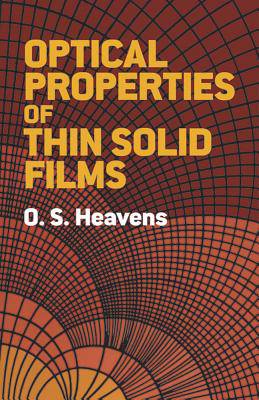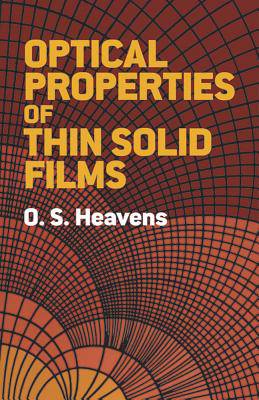
- Retrait gratuit dans votre magasin Club
- 7.000.000 titres dans notre catalogue
- Payer en toute sécurité
- Toujours un magasin près de chez vous
- Retrait gratuit dans votre magasin Club
- 7.000.000 titres dans notre catalogue
- Payer en toute sécurité
- Toujours un magasin près de chez vous
Description
Thin solid films are both functional and intrinsically interesting. Their most familiar use is as coatings on the lenses of optical instruments, where they reduce reflections inside the instrument and produce sharper images. Their curious optical behavior has aroused interest since Newton's time, but has been understood only in modem times through examination of their structure by high-powered microscopes. This text treats the formation, structure, optical properties and uses of thin films, emphasizing the causes of their anomalous optical behavior.
Beginning chapters describe the physical nature of thin films-their formation and structure. Heavens discusses thoroughly and practically the common thermal evaporation and sputtering processes. The equipment used is explained and diagrammed. Instruments employed to investigate the structure of thin films -- the optical microscope, electron microscope and field emission microscope -- are described. Photos taken through these instruments show the nonuniform patterns formed by crystallites of silver, gold, chromium, aluminum, nickel and other metals deposited in thin films.
The next three chapters measure the effectiveness of alkaline and metallic thin solid films in transmitting and reflecting light. Maxwell's equations of electromagnetic theory are presented to calculate the intensity of light transmitted or reflected by single, double and multilayered films. Thoroughly treated are methods used to measure the thicknesses of films, which include the refractometer and the interferometer. To determine the effect of thickness on the optical qualities of thin films, experiments with films of silver, gold and other metals of varying thicknesses are examined. In the final chapter, Heavens lists some less familiar uses of thin films: protection of delicate equipment from abrasions; films of metal which eliminate electrostatic charges in lab experiments; and multilayered films, used as filters, through which phenomena such as the sun's corona can be studied.
Theory and practical detail are emphasized equally in this text. A slight background in differential equations is helpful in following the theoretical portions of the text, but the mathematical basis will not impede those who are chiefly interested in experimental techniques and results.
Spécifications
Parties prenantes
- Auteur(s) :
- Editeur:
Contenu
- Nombre de pages :
- 272
- Langue:
- Anglais
- Collection :
Caractéristiques
- EAN:
- 9780486669243
- Date de parution :
- 17-02-11
- Format:
- Livre broché
- Format numérique:
- Trade paperback (VS)
- Dimensions :
- 137 mm x 214 mm
- Poids :
- 272 g







